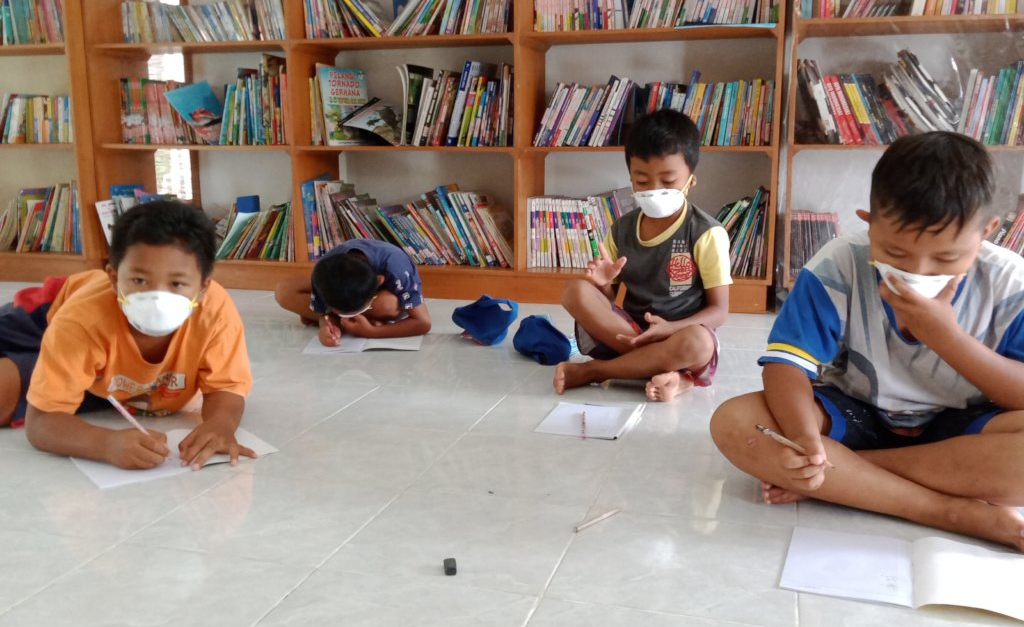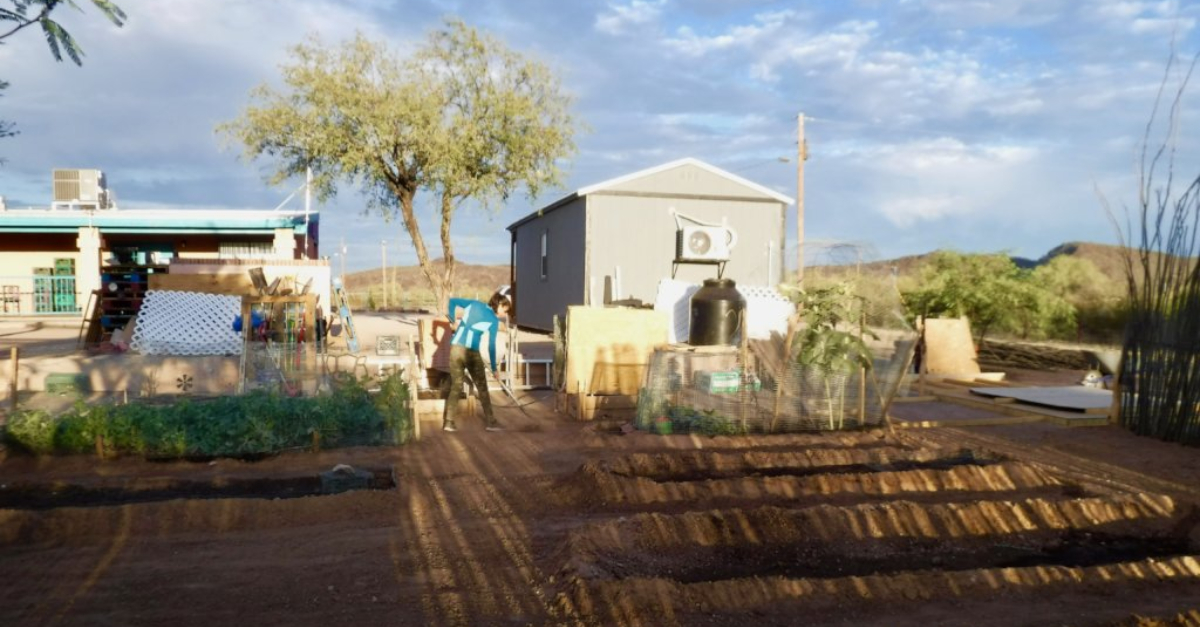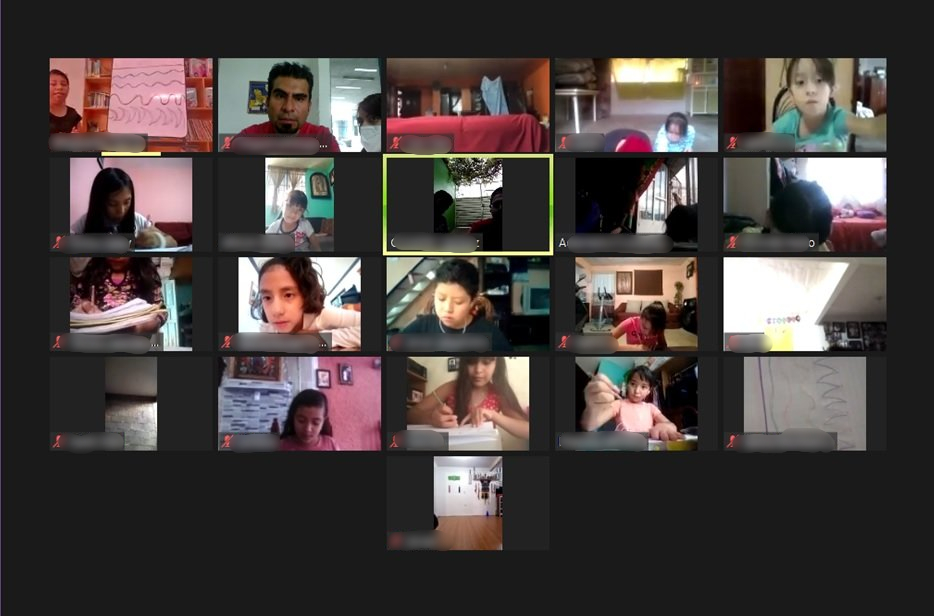When the pandemic started, more than 1.6 billion students stopped attending in-person school. Challenges with technology, food, and finances kept many from focusing on their education. Now, nonprofits are finding ways to keep students healthy and learning during the pandemic.
Last March, students everywhere watched as their schools and daily routines were suddenly an existential threat. Gone were the pleasures of playing with their friends at recess, eating lunch in the cafeteria, or exploring their favorite subject in the classroom.
But for many, that was only part of the problem.
As millions of students traded whiteboards for screens, millions more were left in the dark.
Vanessa Reksodipoetro of Yayasan Usaha Mulia (YUM), an Indonesia-based education and health nonprofit, said students and teachers scrambled to figure out ways to continue learning during the pandemic. In the absence of the high-speed internet access required for most remote learning programs, many turned to the messaging application WhatsApp.
And although WhatsApp works for simple communication, it’s not so great for teaching entire lessons. As frustrated students sought help, many of their parents found themselves in a teaching role they didn’t have time for.
Around 60% of Indonesia’s workforce earn their living in the informal sector. That means for about 70 million people in Indonesia, the pandemic came without the security of working from home, a guaranteed paycheck, or severance pay.
“Economic hardship was felt very quickly, and the last thing on their minds was to ensure their children continued receiving education,” Vanessa said.
Preoccupied with the pandemic’s challenges, students’ participation in their lessons began to drop. Only 15% of students were actively doing their homework in the communities YUM serves, according to a September 2020 report.
“The teachers in government schools said they lost contact with some students. Those same students informed our staff that thoughts of dropping out are constantly on their minds.”
—Vanessa
To help students and parents struggling to adjust, YUM applied for a special permit to organize small, socially distanced tutoring groups. If learners can’t join a group at the library, YUM goes to them. The team delivers educational packages filled with worksheets, books, and arts and craft tutorials to students living in remote regions.

Photo: Yayasan Usaha Mulia
On the other side of the world in the United States, educators in the GuVo District of the Tohono O’odham Nation in Arizona were already struggling with some of the lowest graduation rates in the country. When pandemic-related food shortages wiped out the district’s grocery store, Jen McCormack of the Native American Advancement Foundation (NAAF) knew they would have to address education and access to healthy meals.
They started by turning their after-school and summer adventure programs into a delivery service. The team brought meals and school supplies directly to each student’s home. They went from serving 65 students to 122—nearly doubling the program’s reach.
But there was another problem: Many families didn’t have the types of laptops compatible with Arizona’s public education platforms, which require specific computers and internet speed.
NAAF’s solution was co-creating a remote learning center with another group. Students in the district can now reserve computers that have been safely spaced out to do their school work. Tutoring services and healthy food are complimentary. Outside, in the brand new community plot known as “Ruth’s Garden,” students can learn about desert ecology, food systems, nutrition, Tohono O’odham language, and himdag (lifeways) as they grow fresh produce to bring home to their families at the end of the day.
“Students and families loved working in Ruth’s Garden during 2020 and requested an expanded site and additional gardens in the district. This is an embodiment of Tohono O’odham culture and health during a pandemic,” Jen said.

Photo: Native American Advancement Foundation
In areas with extremely high death rates due to COVID-19, local organizations like the Club de Niños y Niñas del D.F. & Estado de México AC radically changed their daily operations.
Andrea Ledezma said the team turned their in-person activities into virtual Zoom sessions, piloted new systems for virtual learning, and enabled a 24-hour line that lets students struggling with the pandemic’s emotional toll speak to a psychologist.
“We keep working so that their families recognize the importance of continuing education and that, by participating in the club, they continue to develop in an integral way.” —Andrea
Although the nonprofit continues to offer fully remote services, they’re finding ways to help students bond as much as possible. But since students thrive off in-person interaction, Andrea hopes they can move toward a hybrid approach: reopening the club to serve students in small groups without abandoning virtual programs.
“We know that children need to be around other children to learn to socialize and to regulate themselves. They also need physical activity, to learn new things, and to stimulate their imagination,” Andrea said.

Photo: Club de Niños y Niñas del D.F. & Estado de México AC
Free Minds Book Club & Writing Workshop, a nonprofit working with students who are incarcerated in Washington, D.C., is making the most of limited resources. According to Neely Wester of Free Minds, students are confined to their cells for 22 hours or more every day to prevent the spread of COVID-19. With prison-led educational and rehabilitation programs like Free Minds’ paused, many of their members have reported high levels of stress, anxiety, and depression.
Free Minds’ book club for returning citizens is now virtual, and more than 60 members attend weekly. They also receive packets filled with meditations, writing prompts, news, and brain teasers to challenge and soothe their minds.
But some of their members face technological barriers to learning and rehabilitation. The lack of mobile devices at juvenile centers, for one, makes it impossible to join Free Minds’ virtual book club. To stay connected with these hard-to-reach students, Neely said Free Minds staff is working around the clock to provide one-on-one assistance and find innovative ways to communicate, collaborate, and make their services accessible to everyone.
From Washington, D.C. to Indonesia, the stories we heard from our partners working in education shared a common thread: Limited access to resources is leaving students locked out of learning. With close to half the world’s students still affected by partial or full school closures, nonprofits like these need help bridging the gap between COVID-19 relief and education—because kids can’t keep learning during the pandemic if they don’t have the basics.
Featured Photo: Help Save Lives with Team Survive by PCI-Media ImpactFind exactly what you're looking for in our Learn Library by searching for specific words or phrases related to the content you need.